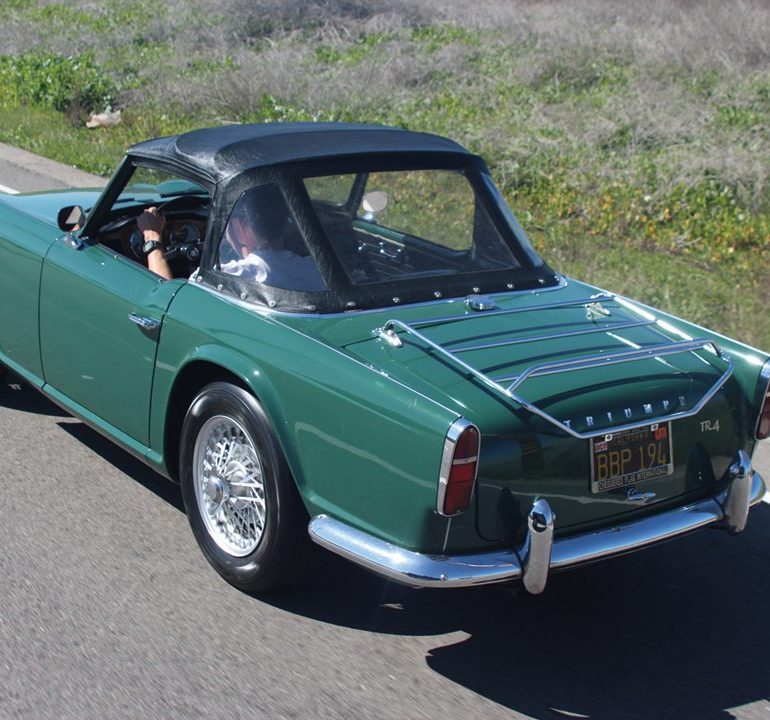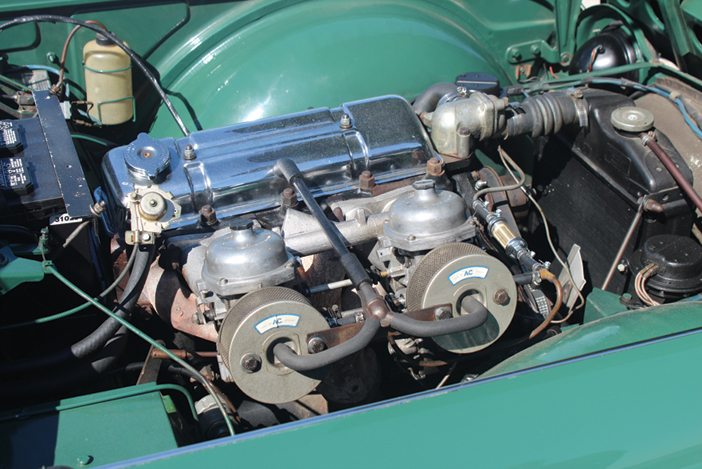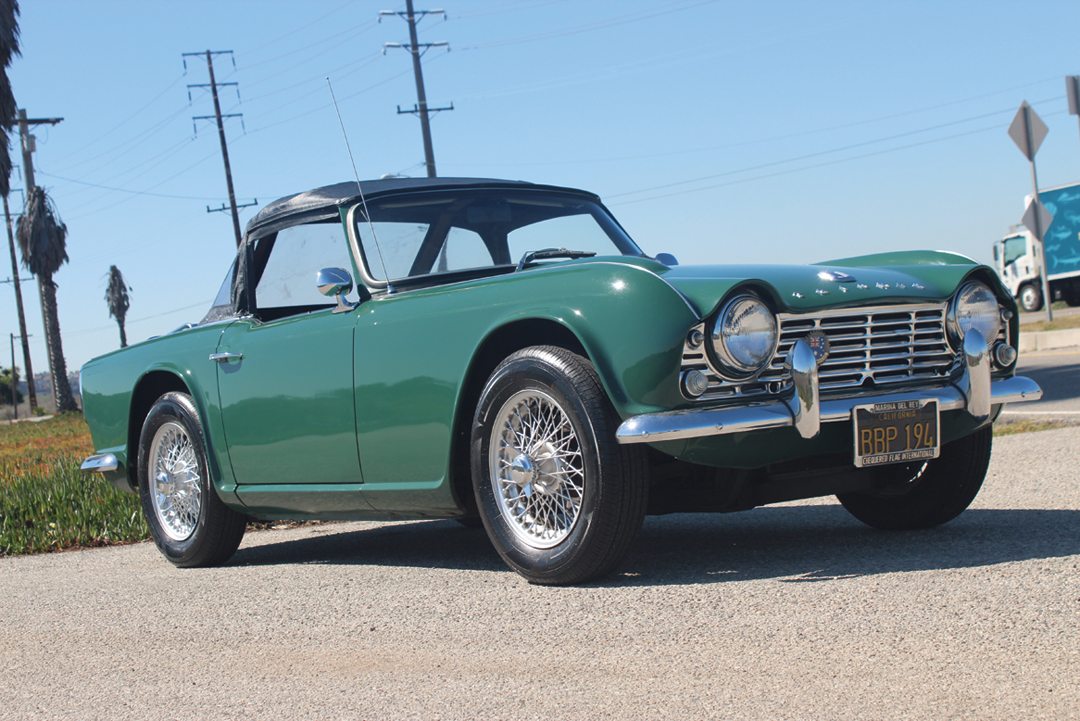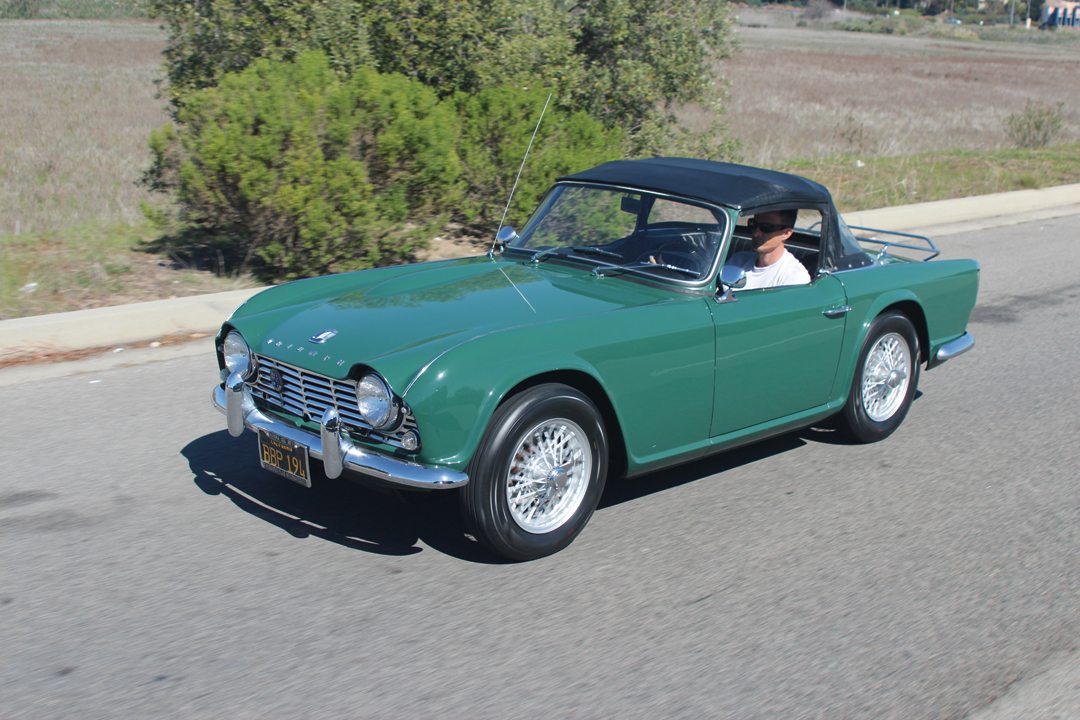
As the ’50s progressed the TR2 received incremental improvements, warranting it being rebadged as a TR3 in 1955 and TR3A in 1957. Some of these improvements included the addition of front-wheel discs and an enlarged 2.2-liter engine. However, as the ’50s were coming to a close, it became apparent to the powers that be at Standard-Triumph that the TR3 was looking decidedly “old” and dated, compared to the latest offerings from its competitors.
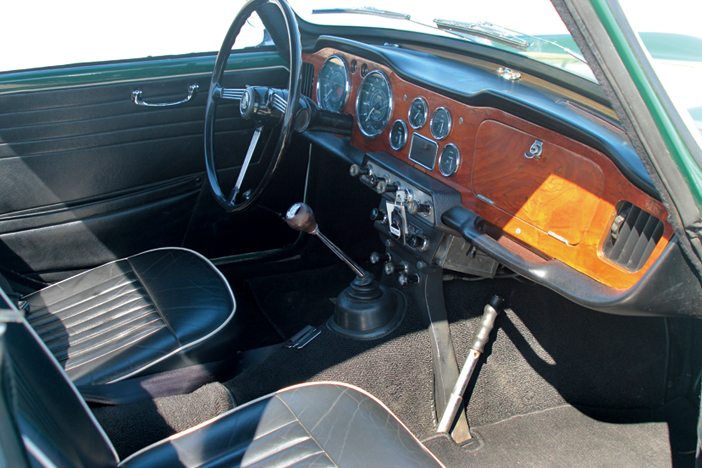
When debuted in September 1961, Michelotti’s modern styling tended to polarize enthusiasts, you either loved it or hated it. With its long, sloping “eyebrow” hood and more squared-off rear end, with subdued tail fins,the TR4 was in fact a big styling departure from the TR3, though mechanically it was essentially the same car underneath. While contemporary reviewers were decidedly mixed on its looks in period, with the benefit of time, the TR4 has come to be much more appreciated as not only a stylish model, but perhaps the most practical and useable Triumph TR. Constructed from 1961 to 1967, the TR4 was built by Standard-Triumph when it was still an independent company and represents its zenith, in terms of reliability and build quality. As a result, TR4s have, by and large, survived the past 50 years and make for a relatively easy classic to maintain and restore.
After opening the door to the TR4, the driver climbs into the car by simultaneously lowering oneself down into the low bucket seat while sliding the right leg under the large banjo-style steering wheel. Once in, the TR4’s cockpit is roomy with plenty of legroom for taller drivers, though with the top up, they may have to contend with having their head in the roof! With a tall belt line, and low seating position, the driver feels much more ensconced in the TR4, as opposed to the TR3 driver who may feel like they are sitting “on” the car. The wood-faced dashboard is clean and elegant with a large Smiths speedometer and tachometer either side of the steering column and a cluster of four Smiths ancillary gauges centrally clustered around the ashtray. Below this central grouping is a raised switchgear cluster that includes the ignition switch—give it a turn and the 2.2-liter four rattles to life with a low-toned burble. After depressing the pendulum-style clutch and selecting first in the 4-speed box, a crack of the throttle and releasing the clutch lets the TR4 pull smoothly away.
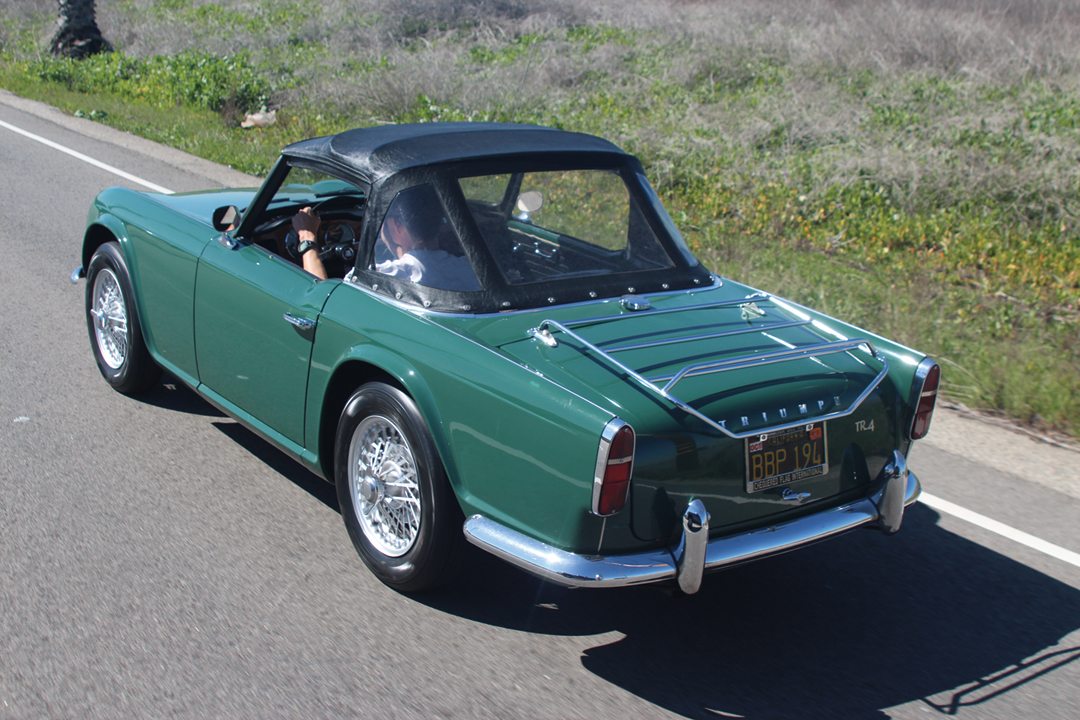
TR4s made up through January 1965 feature the same live axle rear suspension as found on the TR2 and TR3 and so can suffer from axle tramp under harder driving. The later TR4A, built from January 1965 to August 1967, features an independent rear suspension with semi-trailing arms, which help alleviate this and make the rear suspension more tunable.
Regardless of whether it is a live axle TR4 or the IRS TR4A, either example is a highly enjoyable and easy classic car to maintain and enjoy.
Driven Classics at a Glance:
1964 Triumph TR4
Production: 1961–1965 (TR4); 1965–1967 (TR4A)
Wheelbase: 88 inches
Length: 153.6 inches
Front Track: 49 inches
Rear Track: 48.5 inches
Weight: 2,245 pounds
Suspension: [Front] Independent with wishbones, coil spring and telescopic damper, [Rear] Live axle, half-elliptic springs and lever-arm shocks.
Engine: 2.2-liter, inline 4-cylinder, OHV
Bore x Stroke: 86-mm x 92-mm
Comp. Ratio: 9.0:1
Induction: Twin Stromberg 175 CDs
Power: 105-hp @ 4700 rpm
Torque: 132-lbs-ft @ 3350 rpm
Transmission: 4-speed synchro, plus reverse
Brakes: [Front] 11-inch Girling Discs, [Rear] 9-inch x 1.75-inch drums
PERFORMANCE
Top Speed: 105 mph
0-60 mph: 9-sec
Average fuel consumption: 27-30-mpg
VALUATION
Price at launch: $3,000
Excellent: $48,500
Good: $28,800
Average: $18,000
Poor: $11,800


